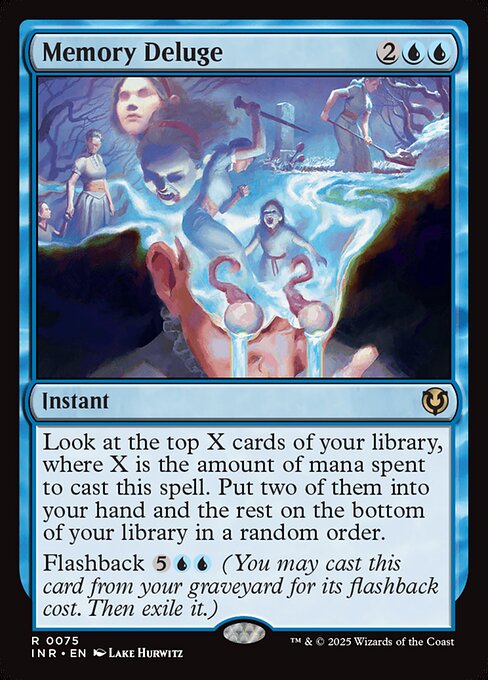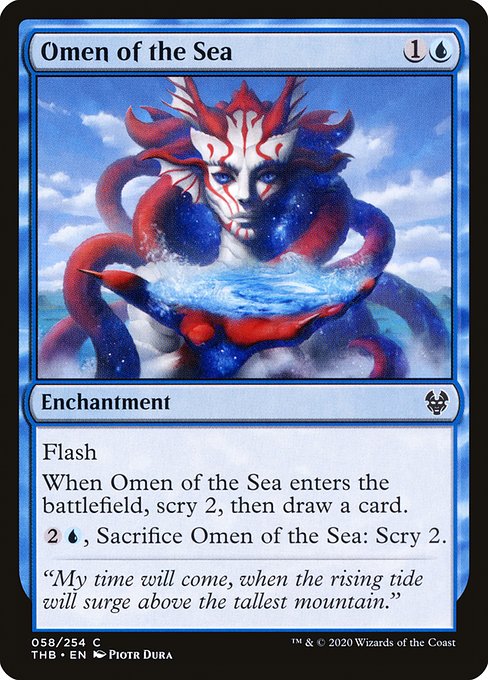Deck & Commander Strategies

Grist, Voracious Larva
Deploy Grist early to leverage its low mana cost, then use reanimation spells to bring back creatures from the graveyard for value and board presence. The deck aims to overwhelm opponents with resilient creatures and incremental advantages through reanimation synergies.

Aminatou, the Fateshifter
Focus on controlling the board with counterspells, removal, and flicker effects to generate card advantage and value. Aminatou’s deck stabilizes early and wins through combos or overwhelming value generation by manipulating the top of the library and recurring key creatures.
Gameplay Insights
- 1
Aminatou’s repeated flickering of Omen of the Sea was critical for maintaining card advantage and controlling the flow of the game.
- 2
Grist’s player used Revitalizing Repose to protect and buff creatures, turning them into resilient threats that are harder to remove.
- 3
Memory Deluge was cast with flashback, allowing Aminatou to draw multiple cards and maintain hand resources against Grist’s aggressive board.
- 4
Solitude was used defensively to remove key creatures and prevent Grist from reanimating threats freely, trading off board presence for tempo.
- 5
Aminatou’s use of counterspells forced Grist’s player to carefully time reanimation spells, limiting their impact.
- 6
Combat decisions included trading creatures to manage opposing threats while maximizing life gain and damage output.
Notable Cards
-

Grist, Voracious Larva // Grist, the Plague Swarm
-

Aminatou, the Fateshifter
-

Memory Deluge
-

Solitude
-

Omen of the Sea
-

Orcish Bowmasters
Gameplay Summary
The duel between Grist, Voracious Larva and Aminatou, the Fateshifter was a tightly contested matchup showcasing a battle of resilience and control.
Grist's player focused on deploying the one-mana commander early and leveraging reanimation spells to gain value from creatures in the graveyard.
Aminatou's control-oriented deck aimed to stabilize the board with counterspells and removal, while gradually generating card advantage through flicker effects and value engines like Omen of the Sea.
Early on, Grist managed to establish a persistent board presence, but Aminatou was able to respond with spells like Memory Deluge and Solitude to limit Grist’s board impact and disrupt reanimation plans. A key turning point was when Aminatou successfully flickered Omen of the Sea multiple times, drawing several cards and reshaping the top of the deck to maintain card advantage.
Meanwhile, Grist’s player tried to maintain pressure with multiple creatures, enhanced by effects like Revitalizing Repose to protect key creatures and bolster the board.
The game featured tactical combat decisions, such as using blockers effectively and choosing when to trade creatures like Solitude to remove threats.
The duel highlighted the struggle between Aminatou’s control and manipulation tools against Grist’s aggressive reanimation and incremental board growth.
The outcome hinged on the ability to balance disruption with board development, with Aminatou attempting to lock the game down through value and resilience.















![Planeswalker Rumble!! Modern Horizons 3 ft. Sorin, Tamiyo, Grist, Ral Zarek [EDH/Commander Gameplay] thumbnail](https://i.ytimg.com/vi/R7_ukVI4hXg/sddefault.jpg)


